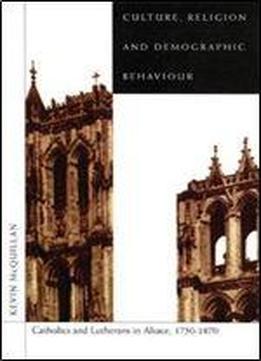
Culture, Religion, And Demographic Behaviour: Catholics And Lutherans In Alsace
by Kevin McQuillan /
2018 / English / PDF
13 MB Download
McQuillan shows that the population of the once largely German-speaking region of Alsace was sharply divided into two major religious communities, one Catholic, the other Lutheran. Religion was a central source of identity and a filter through which the political struggles associated with the integration of the region into French society were perceived. The five communities McQuillan studies represent both the religious division in the region and the varying economic circumstances of the population. His analysis of the demographic record of these communities is based on a family reconstitution analysis, which permits a detailed study of patterns of marriage, illegitimacy, marital fertility, and childhood mortality. A wealth of demographic research attests to the fact that theological differences between religious groups on matters of marriage or sexuality do not necessarily lead to differences in demographic behaviour. McQuillan argues that religion mattered in the Alsatian case because religious affiliation became a central element of social identity. Over time this resulted in what historians have called the "confessionalization" of the population. It also meant that the far-reaching political changes that affected France and Alsace in the period 1750-1870 were seen by the population through the lens of religion. Not only a case study of Alsace but an exploration of the more general issue of the role of religion in promoting or delaying demographic change, Culture, Religion, and Demographic Behaviour will be of great t to students in the fields of population, religion, and social change.











